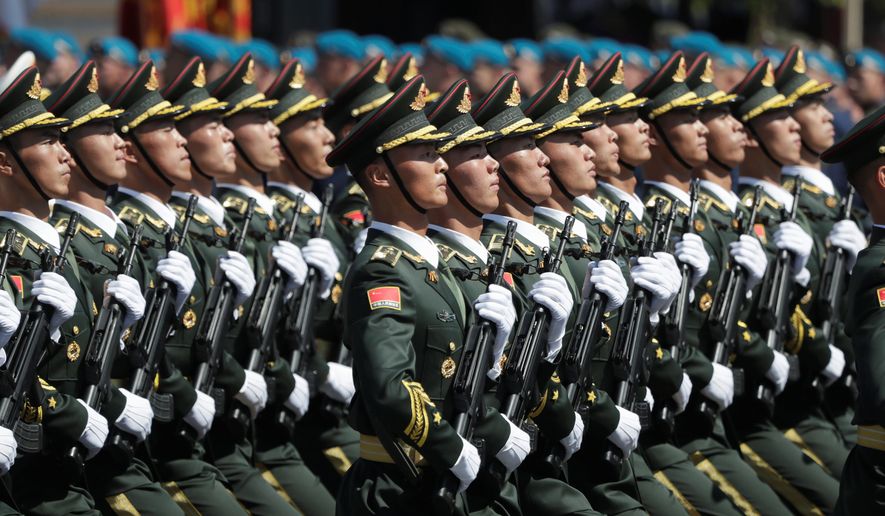The Pentagon needs better weapons for waging warfare below the level of conventional military conflict — such as information and intelligence warfare capabilities — to win against strategic competitors, according to a report by the Defense Science Board.
“Gray Zone” warfare capabilities include better cyberweapons, information warfare capabilities, economic and commercial warfare tools and new multidomain military systems, the Pentagon advisory panel stated in an executive summary.
“The study findings emphasized creative ways and means beyond traditional weapons systems to achieve National Defense Strategy objectives,” Craig Fields and Eric Evans, board co-chairs, said in a preface.
The 2017 defense strategy for the first time in decades recognized China as the United States’ most significant strategic competitor, along with Russia. Neither state was mentioned in the summary of the board’s report, “The Future of U.S. Military Superiority.”
The Pentagon and other U.S. national security forces need “to be more aggressive in the Gray Zone and treat every action as a campaign to deter competitors from behavior counter to U.S. objectives.”
The report said U.S. competitors are seeking to become “dominant global powers in the economic, military and sociopolitical domains, with the objective to diminish the U.S. and its critical allies’ standing in the world order.”
“Meanwhile, they also use their militaries to coerce neighbors, attempt to counter U.S. military superiority, and undermine international freedom of action,” the report states. “In addition, such competitors also challenge the United States and its allies in the Gray Zone through undermining elections, malicious use of social media, and employing unfair business practices globally.”
The report warns that systematic use of these weapons is part of a long-term objective to undermine democratic systems and the current world order.
The report criticized current U.S. Gray Zone efforts as “disjointed” and not successful, adding that the U.S. needs coherent and sustained strategic engagement campaigns utilizing all elements of the government. The Pentagon has authorities, resources and experience in Gray Zone conflict but needs to partner with other agencies to better target the campaigns using all elements of national power.
The report calls for developing targeted intelligence within the social media and economic domains, as well as setting up a “National Strategic Engagement Intelligence Center” under the director of national intelligence.
On the cyberspace front, the Pentagon must expand capabilities and use them selectively together with other government activities.
For Cyber Command, the report recommends creating a “Cyber S&T Intelligence Activity” for Gray Zone warfare.
For the military as a whole, the board recommends building a set of “unique multi-domain military capabilities to counter adversary regional military advantages and force them to consider the costs of their actions.”
No details of these capabilities were provided in the summary.
For information warfare, the Pentagon must launch proactive campaigns that will identify and deter an adversary’s malign activities. As part of that effort, a Joint Information Warfare Engineering Laboratory should be set up.
The board also wants greater use of current economic, financial and trade authorities. Better U.S. government strategic engagement campaigns are needed as well, and the report called for setting up a not-for-profit Strategic Competition Support Capability.
“The United States will not sit idle in this Great Power Competition,” the report said. “Failure to act means that strategic competitors will continue to act with impunity to achieve their broad objectives,” the report concludes. “The United States must be persistent in taking the necessary actions that ensure the future of U.S. global engagement and military superiority.”
Michael D. Griffin, who authorized the study and was until July the undersecretary of defense for research and engineering, said the report shows the military needs more than advanced equipment.
“The department must also consider more broadly new ways and means to coerce potential adversaries,” he stated, noting the need for “asymmetric and non-kinetic mechanisms” to influence enemy decision-making.
• Bill Gertz can be reached at bgertz@washingtontimes.com.




Please read our comment policy before commenting.